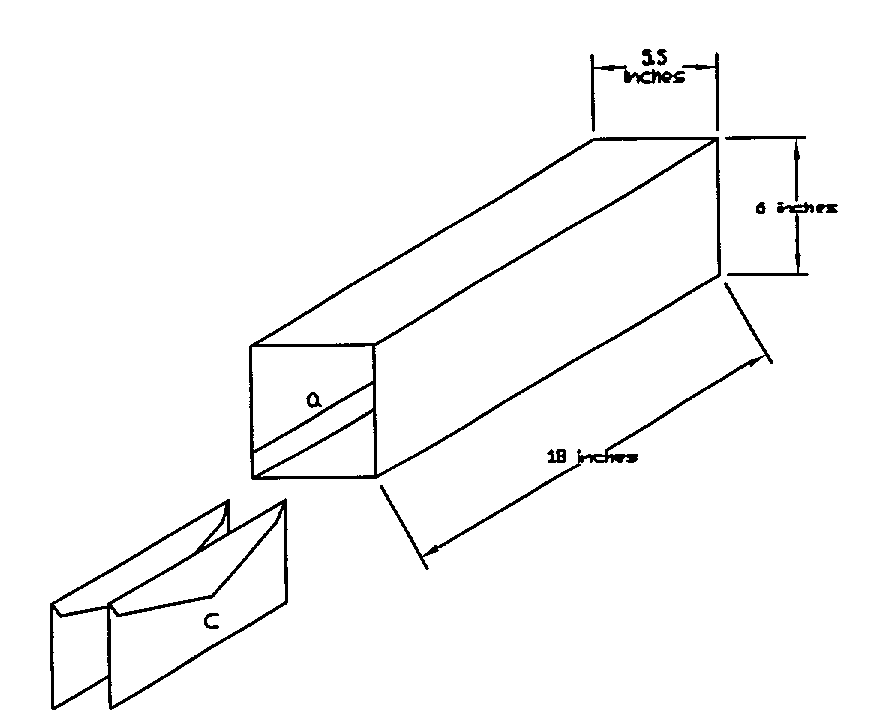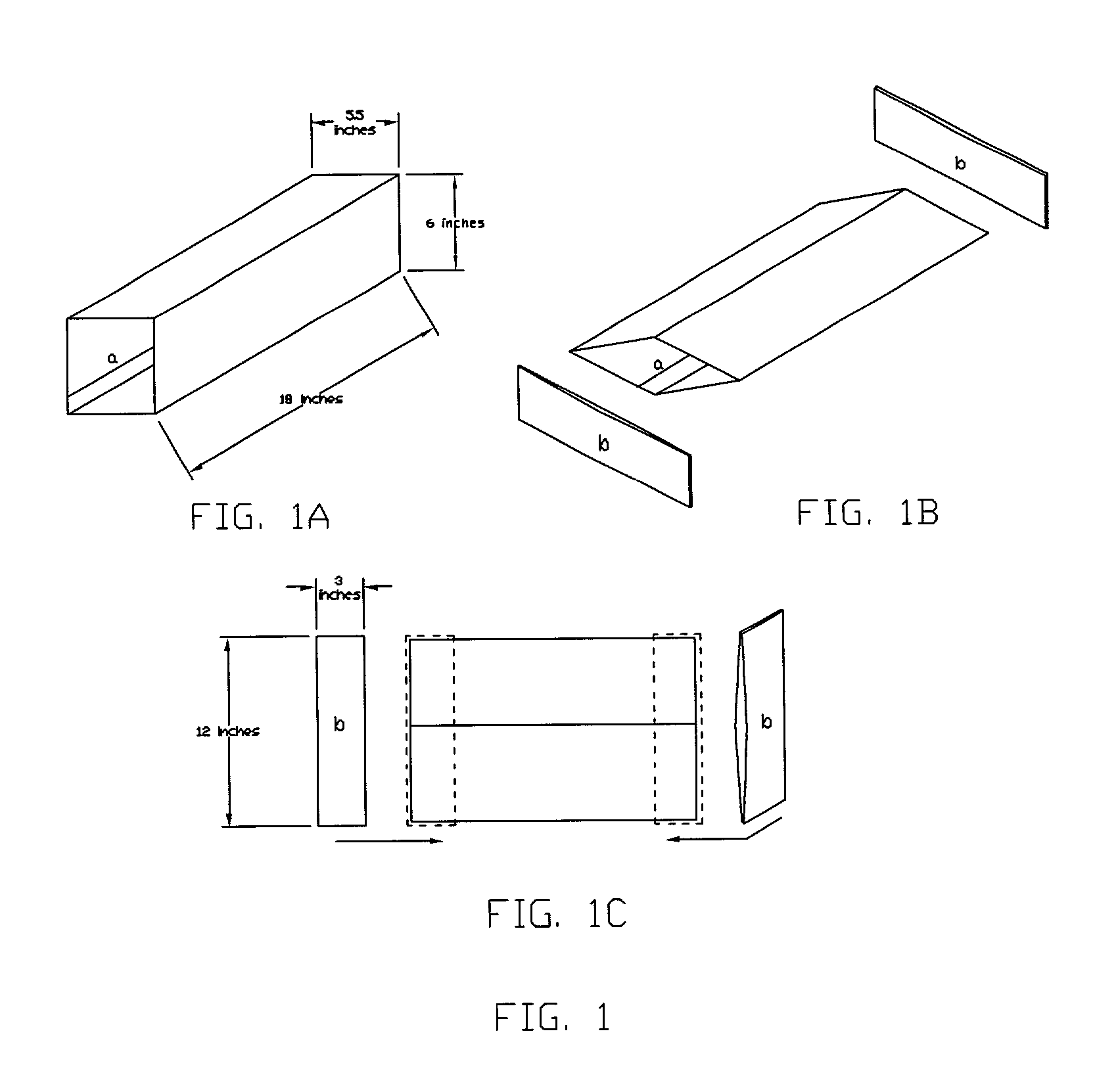Apparatus and method for paper and dry goods bio-decontamination
a technology for bio-decontamination and apparatus, applied in the field of apparatus, can solve the problems of high potential for worker exposure to infectious agents, high complexity of "dry" decontamination, and material damage that is easy to damag
- Summary
- Abstract
- Description
- Claims
- Application Information
AI Technical Summary
Problems solved by technology
Method used
Image
Examples
embodiment-operation
PREFERRED EMBODIMENT-OPERATION
[0027] The preferred operation of this system is illustrated by FIG. 1A The tube is placed in its open square form inside a standard mail box. Once the mail is delivered, the sealed pouch is placed inside the tube with the mail and the whole assembly collapsed to reduce volume as shown in FIG. 2B. Once the tube is collapsed the end sleeves or clamps are placed to hold the tube closed as shown in FIG. 2C. The sleeve is then heated to between 160 and 220 degrees Fahrenheit. As the mail heats up the sealed pouch also heats and releases its fumigant payload when an effective temperature is reached. Indication of release and subsequent drying of the carrier is performed by standard indicators in solution and on the carrier in the sealed pouch. With time and temperature the dry goods are sterilized without harming them with excessive heat. Once the prescribed treatment time is reached the tube is opened and ventilated outside or in a window. The contents are ...
PUM
| Property | Measurement | Unit |
|---|---|---|
| temperatures | aaaaa | aaaaa |
| temperatures | aaaaa | aaaaa |
| volume | aaaaa | aaaaa |
Abstract
Description
Claims
Application Information
 Login to View More
Login to View More - R&D
- Intellectual Property
- Life Sciences
- Materials
- Tech Scout
- Unparalleled Data Quality
- Higher Quality Content
- 60% Fewer Hallucinations
Browse by: Latest US Patents, China's latest patents, Technical Efficacy Thesaurus, Application Domain, Technology Topic, Popular Technical Reports.
© 2025 PatSnap. All rights reserved.Legal|Privacy policy|Modern Slavery Act Transparency Statement|Sitemap|About US| Contact US: help@patsnap.com



